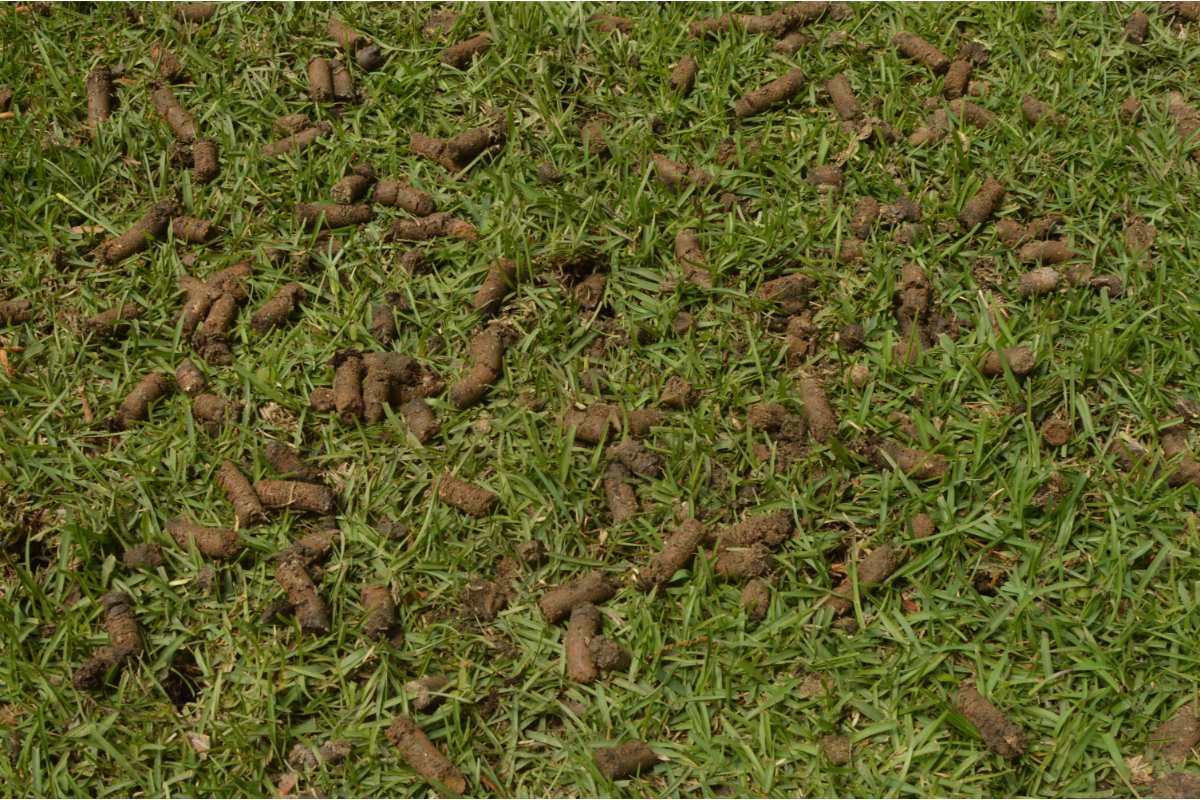
Our dry climate can make it hard to grow a lush Lone Star lawn. However, aerating your soil can help. Aeration involves creating small holes in the ground to allow air, water, and essential nutrients to reach the roots. But knowing when to aerate your Texas lawn is crucial to maximizing its benefits.
Benefits of Aerating Your Lawn
Let’s discuss why lawn aeration is vital here in Texas where heavy, compacted clay soils are common. Compacted soil can prevent air and water from reaching the roots, leading to diseases and other issues. By aerating your lawn, you can ensure that air circulates freely, promoting growth and helping prevent disease.
Here are some benefits of lawn aeration:
- Reduces compaction: Compacted soil can prevent water, oxygen, and nutrients from moving through it. Aeration creates small holes that allow these essential elements to penetrate the soil.
- Promotes root growth: Compacted soil inhibits the growth of grass roots. The soil is made looser and helps roots grow when it is aerated.
- Decreases thatch buildup: Lawn aeration helps to reduce thatch formation by breaking through the layer of dead and living organic matter that accumulates between the soil surface and the grass blades. If this layer becomes too thick, it can prevent the grass roots from getting water, nutrients, and air.
- Encourages earthworms: Soil compaction can make it difficult for earthworms to perform their helpful tasks. For instance, earthworms are essential in clearing lawn thatch, but their capacity to do so may be constrained by compacted soil.
- Improves drainage: Drainage problems develop when compacted soil prevents water from soaking into the ground. Aeration helps to improve drainage to reduce runoff, flooding, and soil erosion.
When to Aerate Lawns in Texas
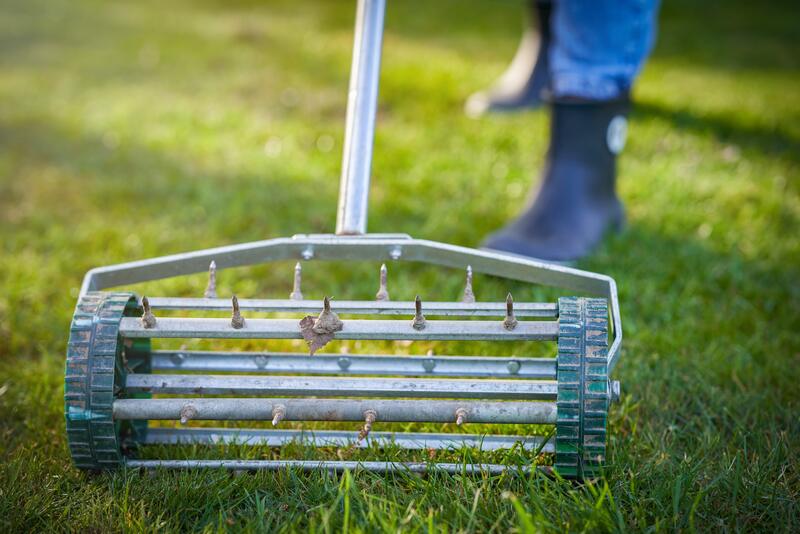
The late spring and early summer are ideal times to aerate warm-season grasses in Texas. Warm-season grasses are the most common grass type in Texas, but cool-season grasses can be grown in the Panhandle and in north Texas. Cool-season grasses should be aerated in the fall.
Other factors like soil type, grass health, and weather can affect timing.
Soil Conditions Affect Aeration
Soil types vary greatly in Texas. Coastal regions have sandy soils, while other areas have heavy clay soils. These factors can impact how often and when to aerate to maintain healthy grass growth and overall lawn health. For example, clay soils need aeration more frequently than sandy soils.
Texas’s four major soil types are sandy, clay, loamy, and chalky.
- Sandy soil is typical in coastal areas such as Corpus Christi.
- Clay soil is found in the eastern and central regions, like Austin and San Antonio.
- Loamy soil, common in North Texas from the Panhandle down to the Lubbock area, combines silt, clay, and sand.
- Chalky soil, also called caliche, in West Texas has a high calcium carbonate content and is found from El Paso to Midland.
| Soil Type | How Often to Aerate |
| Sandy soil | Once a year |
| Loamy soil | Once a year |
| Chalky soil | Twice a year |
| Clay soil | Twice a year |
If you’re unsure about soil’s composition, get a soil test. The test will also recommend the necessary amendments and identify which nutrients and pH adjustments are needed. The Texas A&M Soil Testing Laboratory and your county Extension office offer easy and affordable soil tests.
Timing of Aeration Based on Grass Type
Warm-season grasses grow quickly in late spring and early summer. In the Panhandle, buffalograss is a good choice for warm-season turf as part of a drought-tolerant landscape.
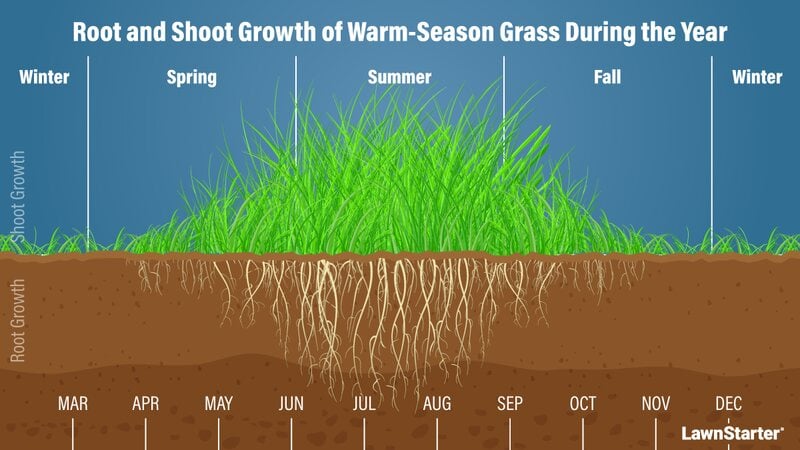
- Warm-season turfgrass: Aerate during their active growing season from May to September. This includes Bermudagrass, Zoysiagrass, St. Augustine, and centipedegrass.
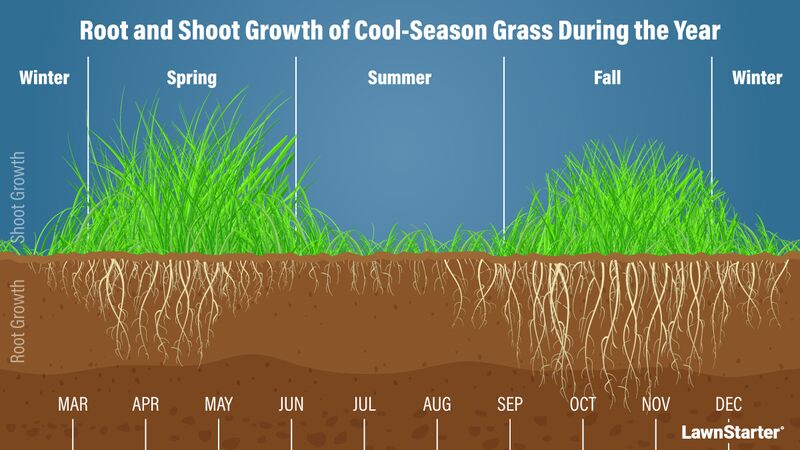
- Cool-season turfgrass: For cool-season grasses such as fescues, Kentucky bluegrass, and perennial ryegrass, it is recommended to aerate between September and November or March and April.
Signs Your Lawn Needs Aeration
Aeration can benefit lawns with conditions such as soil compaction, water runoff, and low oxygen levels. Your lawn may need aeration if it exhibits the following symptoms:
- Drainage issues: Some parts of your yard may have puddles, while others may have water that flows too quickly.
- Poor growth: If sections of grass are turning yellow, or you have thinning grass, bare spots, or lack of growth, it may need aeration.
- Hard-packed soil: Compacted soil is dry, dense, and rock-hard. You should aerate if it takes a lot of force to push a screwdriver into the soil.
- Excessive thatch: If the layer of living and dead grass and roots between your turf and soil is more than half an inch thick, it can prevent water, nutrients, and air from reaching your root system.
- Pests, weeds, or disease: If you are consistently experiencing problems with pests, diseases, or pesky Texas weeds in your lawn, it could be a sign that your lawn needs aeration.
- Heavy use: To decrease soil compaction, it is recommended to aerate lawns that have high traffic from pets, kids, or heavy equipment like riding mowers.
For optimal grass health, avoid aerating during hot or dry weather. This can cause extra heat exposure and dry out the grass. The best time to aerate is during cool weather and one or two days after it rains. Make sure you evaluate your yard before deciding what time to aerate it rather than choosing a date.
Types of Aeration
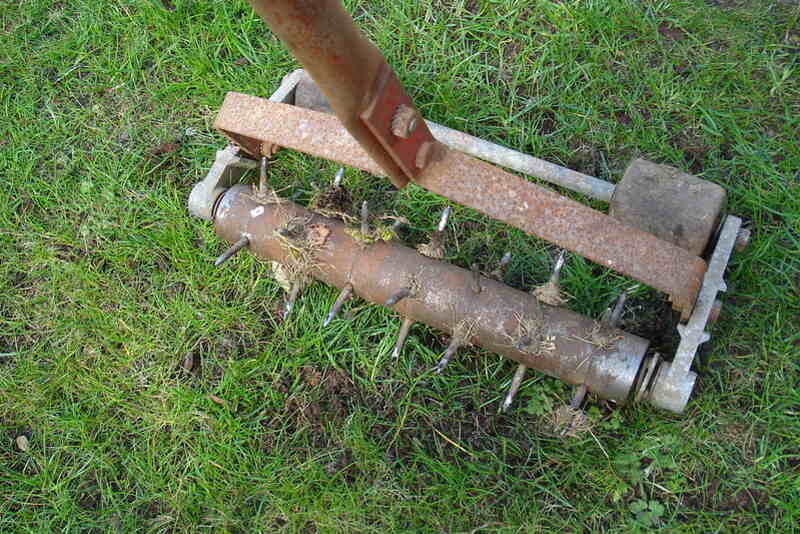
Aerating a lawn is not difficult, but it can be time-consuming. If you DIY it, your main cost is the tools. You can purchase or rent the equipment or hire a professional. However, hiring a professional is more expensive due to labor costs.
The cost of professional lawn aeration depends on the size of your lawn, labor costs, and the type of aeration technique used. On average, homeowners spend around $145 for this service.
There are two common types of lawn aeration:
- Spike aeration: This method pokes holes in the soil with a spike or tine. It’s cheaper and effective for small areas but can lead to more soil compaction in the long run.
- Core aeration: This technique removes small plugs of soil from the ground. Core aeration is more effective and provides better results but can be more expensive.
Quick Tips for Core Aeration
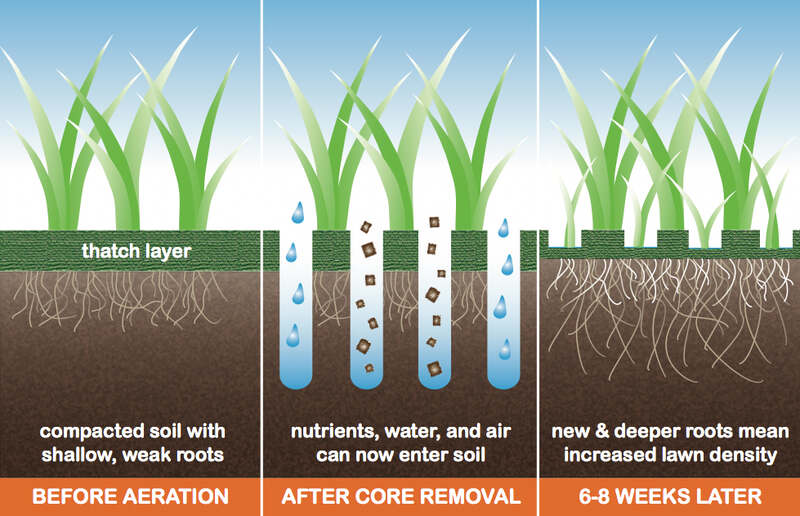
Aeration is essential to lawn care in Texas. By following these tips and aerating your lawn during the appropriate seasons, your lawn will thrive and be the envy of the neighborhood.
- Recently built homes often require aeration, as the soil may not have been adequately prepared before the grass seed was planted, and heavy machinery used during construction can compact the soil, making it difficult for the lawn to grow.
- The best time to fertilize and overseed a lawn is after aeration, as the two processes complement each other.
- Using a core aerator is preferable to using spikes when aerating your lawn. Spikes simply make holes in the soil without removing cores, which does not reduce soil compaction.
- Flag sprinkler heads ahead of time to avoid damaging your irrigation system.
- Use a pre-emergent herbicide to control weeds before aerating as the process can spread the seeds around your yard.
FAQ: Aerating Your Lawn in Texas
After you aerate your lawn, it is ready for overseeding and fertilization. The holes made during aeration are ideal for exposing the soil to seeds and providing nutrients to your grass roots.
Yes, but without aeration, your lawn can become thin and unsightly, making it more challenging to manage and susceptible to weeds and disease. Aeration is one strategy for a healthier lawn, but it is not the only one. Other essential maintenance responsibilities include watering, fertilizing, lawn mowing, and pest control.
In one to two weeks, the cores will gradually degrade and dissolve into the grass. Because the cores contain soil bacteria that break down thatch, you should leave them on your lawn. Watering and mowing can also break down the cores more quickly.
When To Call a Pro
Aeration is essential to lawn care in Texas. By following these tips and aerating your lawn during the appropriate seasons, your lawn will thrive and be the envy of the neighborhood.
However, aerating can be time-consuming, like most lawn chores. If you would prefer to relax and grill instead of sweating it out under the hot Texas sun, contact one of our local LawnStarter professionals to do the work. They can also handle mowing, trimming, and fertilizer treatments, so you don’t have to.
Are you looking for weed control near you? Lawnstarter has landscaping and lawn care professionals in Austin, Dallas, Fort Worth, San Antonio, Houston, Plano, and more.
Main Image Credit: Sherry Barr Photography / Canva Pro / License